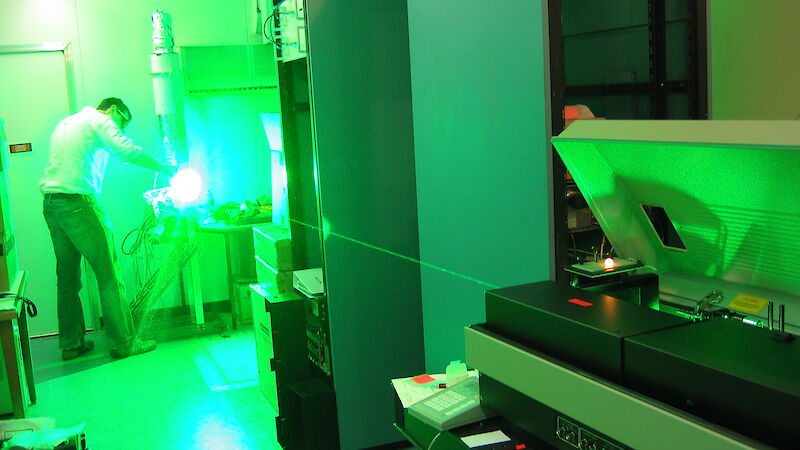Australia’s research into the Antarctic ozone hole and climate will be enhanced this summer with a new high-power laser.
The $270,000 laser will replace the current one which has been used in an atmospheric Light Detection and Ranging (LIDAR) instrument at Australia’s Davis station in Antarctica since 2001.
The LIDAR shoots a beam of laser light, 20 million times more powerful than a standard electric light bulb, into the atmosphere and measures subtle changes in the colour and intensity of the light when it is scattered by atmospheric gases and particles.
The measurements provide information on density, temperature, wind speed and aerosol particles from the surface to heights of 100 kilometres.
This information helps scientists understand process associated with atmospheric change, particularly those related to the ozone hole.
Atmospheric researcher, Dr Andrew Klekociuk, says the new laser will provide the Davis LIDAR with improved stability and power, and will enable measurements of atmospheric properties with higher precision.
“We will be undertaking new measurements of the motion, size and composition of microscopic particles in the Antarctic stratosphere.
“These particles play a fundamental role in the ozone chemistry, and we hope the new measurements will give us a better understanding of how the ozone hole is developing and changing,” Dr Klekociuk.
Dr Klekociuk said the LIDAR is providing important information about long-term climate.
“The Antarctic atmosphere is a litmus site for understanding and evaluating climate change because of the region’s extreme physical conditions and geographical isolation,” Dr Klekociuk said.
Recent research at Davis has found that the ozone hole this spring is likely to be large, but not of record proportions.

